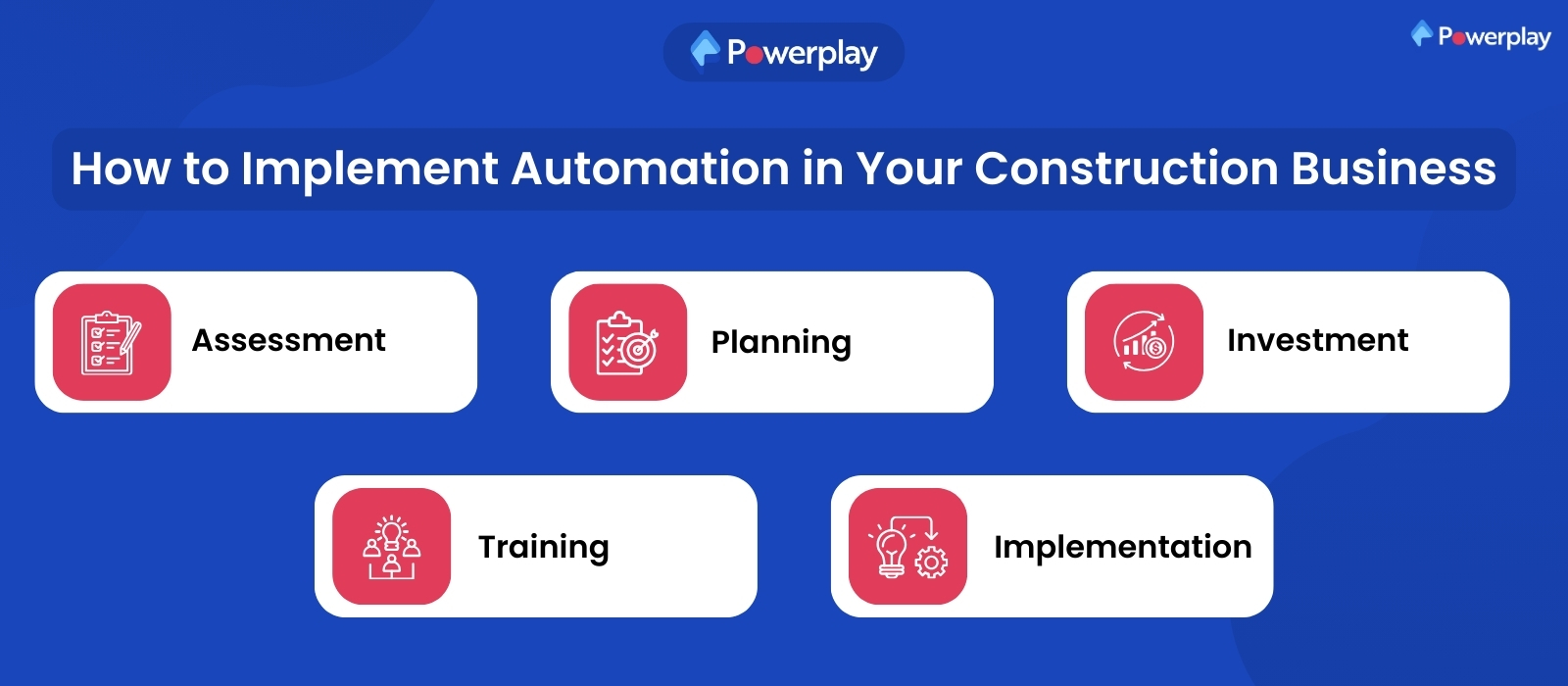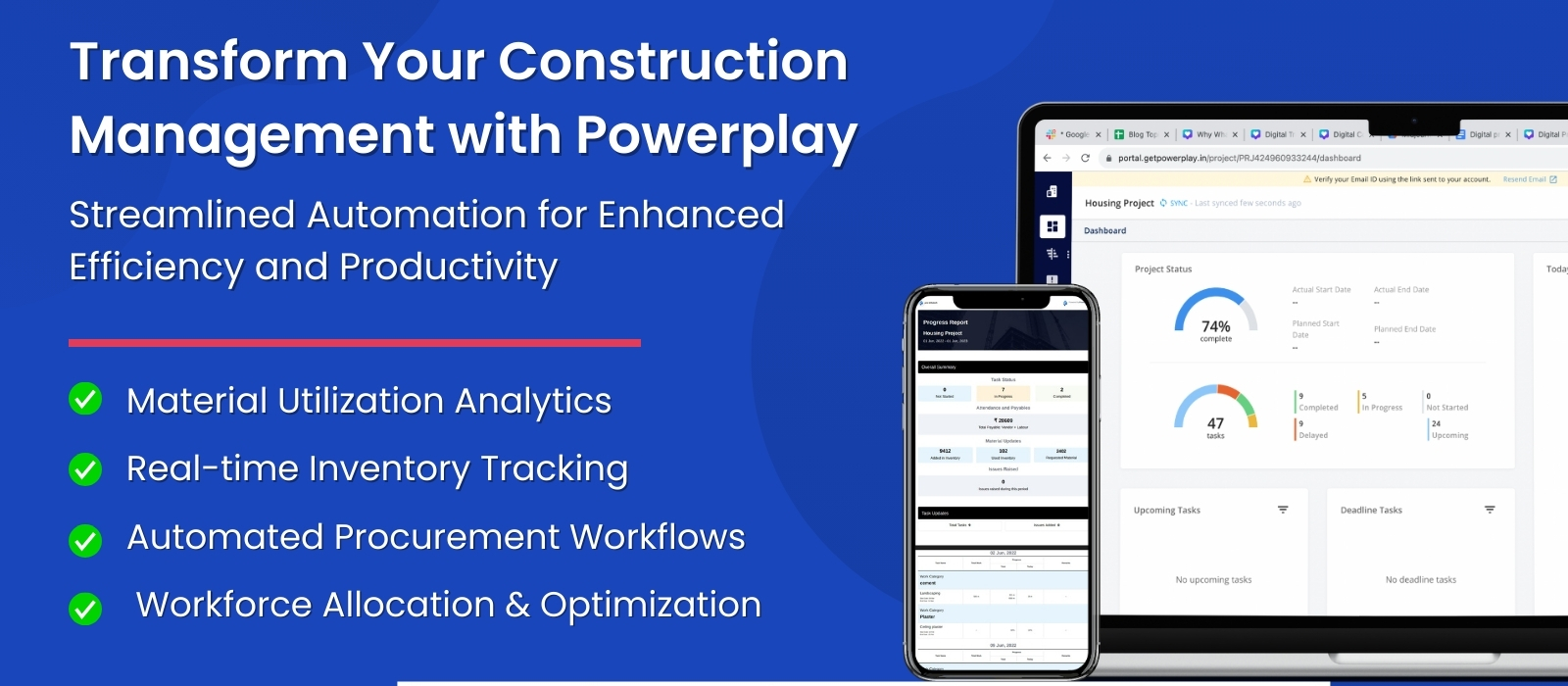11 Benefits of Automation in Construction
-
Sapna
- June 14, 2024

Automation is revolutionising the construction industry, offering numerous benefits that enhance efficiency, safety, and productivity. In an era of technological advancements rapidly transforming various sectors, construction firms must adapt to stay competitive. Construction companies are adopting automation to stay competitive by utilising technologies like 3D printers, construction estimation and bidding software, and robotics. Automation reduces manual errors, speeds up processes, and ensures better resource management, making projects more cost-effective and timely.

This article explores the top 11 benefits of automation in the construction industry, providing a comprehensive overview of how these innovations can significantly improve your operations. Discover why integrating automation is crucial for modern construction success, from improved accuracy to enhanced safety measures.
Table of Contents
What Is Construction Robotics and Automation?

Automation in construction refers to integrating advanced technologies, machinery, and construction management software to streamline and optimise construction processes. It uses construction robotics, including industrial robotic arms, mobile robotic platforms, and collaborative robots (cobots), as well as construction robots for tasks like bricklaying, alongside other technologies such as drones, Building Information Modeling (BIM) and artificial intelligence (AI), to automate tasks such as material handling, site inspections, equipment control, and project scheduling.
By reducing the reliance on manual labour, automation enhances productivity, accuracy, and safety while minimising costs and project completion times. This technology also facilitates better quality control and efficient resource management, marking a significant transformation in the construction industry.
Benefits of Automation in Construction
It offers a multitude of benefits, each significantly enhancing different aspects of the industry. However, it is important to consider the impact of automation on construction jobs and the construction process, as it can lead to a decrease in jobs due to increased automation while also potentially improving efficiency and job growth in the sector.
Increased Efficiency:

Automation streamlines workflows by handling repetitive tasks and optimising resource use, leading to faster project completion and fewer delays. The use of advanced construction equipment, along with technologies like AI, robotics, and IoT, improves operational efficiency, making construction processes more predictable and manageable.
Reduced Costs:

Automation cuts overall costs by minimising human errors, reducing labour requirements, and speeding up project timelines. It also helps avoid rework and wastage, further saving expenses associated with construction projects.
Higher Accuracy Rates:
Automated systems enhance precision in construction tasks, from measurements to material placement, reducing the likelihood of mistakes. This results in higher-quality builds and fewer errors that need correction.
Improved Compliance:
Automation ensures adherence to industry standards and regulations by consistently applying rules and capturing accurate audit data. It simplifies compliance reporting and reduces the risk of violations.
Enhanced Security:

Automated monitoring systems, such as drones and IoT devices, provide real-time surveillance and security, helping to protect construction sites from theft, vandalism, and unauthorised access.
Improved Organisation:
Automation enhances project management through better documentation, streamlined workflows, and integrated data systems, making it easier to track tasks, deadlines, and resources.
Easier Tracking and Reporting:

Automated tools provide real-time data and analytics, facilitating easy tracking of project progress and generating comprehensive reports. This improves transparency and decision-making.
Seamless Collaboration:
In construction automation will help to fosters better communication and collaboration among team members by providing platforms for shared access to documents, updates, and project plans, ensuring everyone is on the same page.
Improved Employee Satisfaction:
Automation reduces tedious, repetitive tasks, allowing employees to focus on more meaningful work and enhancing job satisfaction and productivity.
Improved Safety and Risk Management:

Automated systems improve site safety by monitoring conditions and alerting workers to potential hazards. Robotics and AI can take on various tasks that are dangerous, and reduce the risk of injury to human workers.
Environmental Impact and Sustainability:
Automation promotes sustainable construction practices by optimising material usage, reducing waste, and enabling the construction of eco-friendly structures. Technologies like 3D printing and smart building systems contribute to greener construction processes. Additionally, modular construction benefits from automation by increasing productivity and sustainability through efficient building techniques.
How to Implement Automation in Your Construction Business

To implement automation in your construction business, including automated construction systems, follow the below-mentioned steps one by one:
Assessment:
Evaluate your current processes to identify repetitive tasks and bottlenecks that can be automated. Focus on areas with frequent manual errors to achieve significant efficiency gains and streamline operations.
Planning:
Develop a strategic plan outlining goals, chosen technologies, and an implementation timeline. Involve key stakeholders to ensure alignment with business objectives and secure change support.
Investment:
Allocate a budget for purchasing and implementing automated systems, including hardware, software, and infrastructure upgrades. Consider the total cost of ownership, including maintenance and future upgrades, to maximise long-term savings and productivity.
Training:
Provide comprehensive training for your workforce on new technologies and best practices. Effective training reduces resistance to change and empowers your team to leverage automation fully in daily workflows.
Implementation:
Deploy chosen automation technologies, integrating them with existing processes. Monitor closely to address any issues and ensure a smooth transition, maximising the benefits of automation in your operations.
Use Powerplay Construction Management Software for Automation

Powerplay offers features to enhance construction automation, making project management more efficient and streamlined. Powerplay can also help manage automated construction equipment, such as autonomous vehicles for trenching systems, remotely controlled dozers, and self-driving trucks. Here are five key features that highlight its capabilities:
Material Utilisation Analytics:
Powerplay provides detailed insights into construction material usage, helping to minimise waste and ensure that resources are used efficiently. This feature aids in tracking and forecasting material needs, reducing the risk of shortages or overstock.
Real-time Inventory Tracking:
With real-time inventory tracking, project managers can monitor stock levels and manage supplies effectively. This feature ensures that materials are available when needed, avoiding delays and keeping the project on schedule.
Automated Procurement Workflows:
Powerplay automates the procurement process, from requisition to delivery. This reduces manual errors, speeds up order processing, and ensures that the right materials are ordered and delivered on time.
Workforce Allocation & Optimisation:
This feature efficiently allocates labour resources, ensuring the right number of workers are assigned to each task. It optimises workforce utilisation, reduces downtime, and enhances productivity on the construction site.
Tracking Labor Attendance and Payments:
Powerplay simplifies construction labour and payroll management by tracking attendance and automating wage calculations. This ensures accurate and timely payments, enhances worker satisfaction, and reduces administrative overhead.
By leveraging these powerful features, Powerplay significantly improves the efficiency and effectiveness of construction projects through automation. To experience all the benefits of construction automation firsthand, request a demo or download the app today and see how Powerplay can revolutionise your construction management processes.














